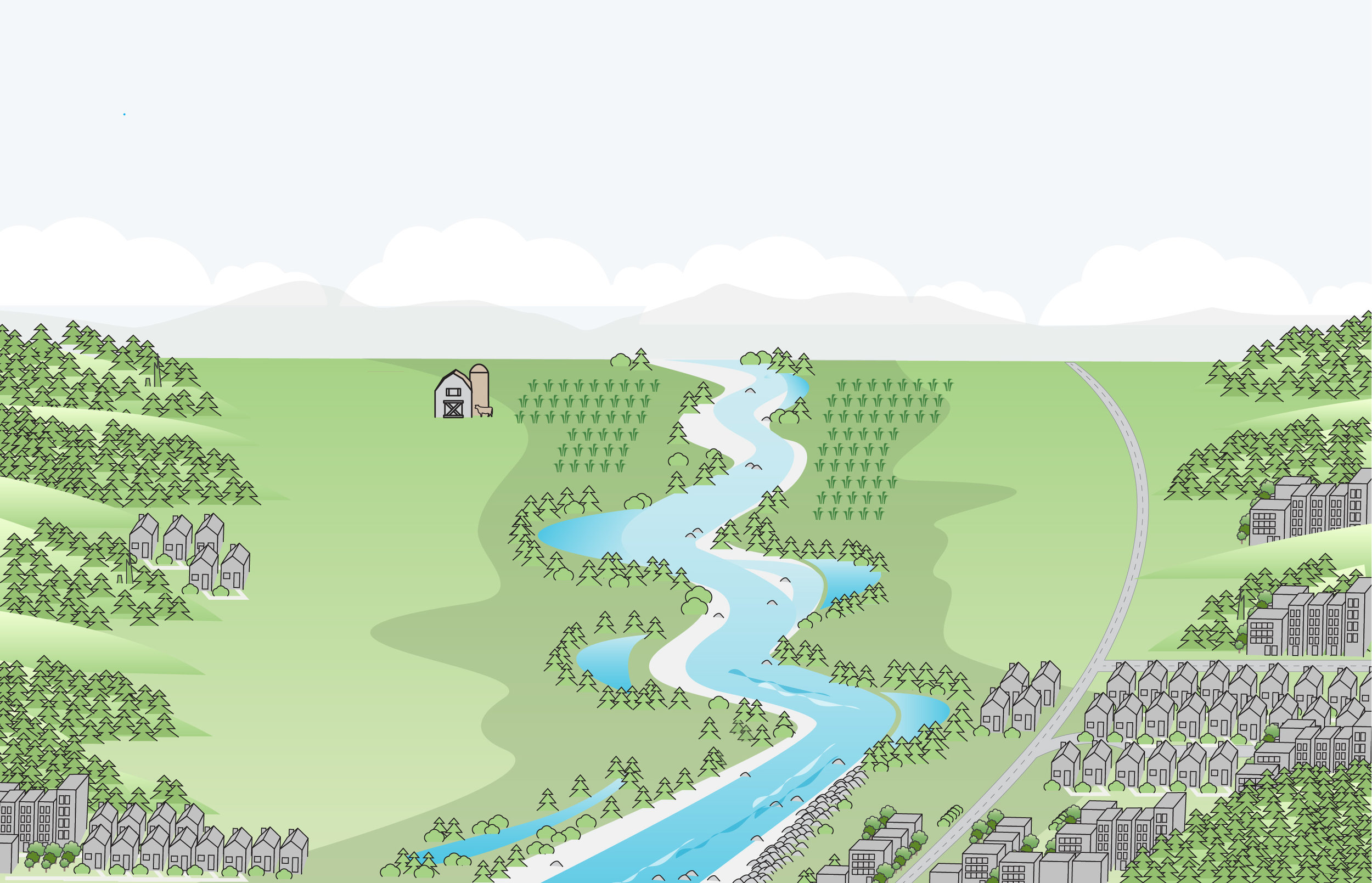By Chris Hilton, urban partnerships director
Polluted stormwater runoff, poor air quality, summer heat waves, environmental and social equity: These are all challenges that our cities and towns face as our population grows. While these challenges will require our communities to work together in myriad ways to develop solutions, one wonderful part of the solution is simple: trees! Glorious, beautiful trees.
The Two-Minute Takeaway
A quick explanation of scientific terms and concepts we use regularly in conservation
Protecting and enhancing our urban tree canopy is an opportunity to mitigate the challenges in our urban landscape. But what is urban tree canopy, anyway?
It is all the trees in your city or town. It’s trees on private property and in public spaces, like parks. It is also the street-side trees that are found between sidewalks and roads.
Trees in our urban landscapes provide much more than attractive greenery. A healthy, mature tree canopy positively impacts human health, sense of community and economic development. Trees also have important environmental impacts — they can decrease flooding from polluted stormwater runoff, shade buildings to reduce energy consumption and absorb carbon dioxide, which mitigates climate change.
Trees are also a cost-effective solution to clean our air. An analysis done by The Nature Conservancy, Planting Healthy Air, found that investing just $4 per resident could improve the health of millions of people.
While trees alone won’t solve all our urban environmental issues, they are a critical part of the puzzle.



























